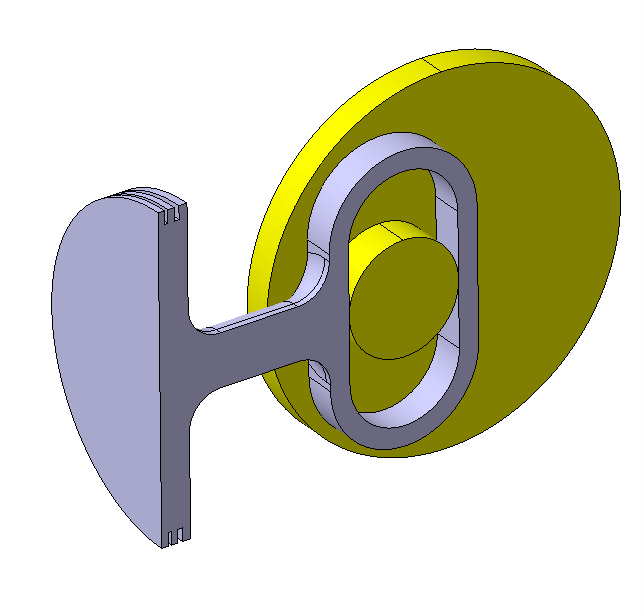Small end design features
 The con rod has a number of important design features and many of these are associated with the design of the small end. The primary function of the con rod is, of course, to transmit the power of the reciprocating motion of the piston to the rotating crankshaft. In this article we shall consider some of the design features of the small end of a modern four-stroke racing con rod and the different solutions to the various problems which must be overcome.
The con rod has a number of important design features and many of these are associated with the design of the small end. The primary function of the con rod is, of course, to transmit the power of the reciprocating motion of the piston to the rotating crankshaft. In this article we shall consider some of the design features of the small end of a modern four-stroke racing con rod and the different solutions to the various problems which must be overcome.
The small end must provide sufficient bearing area to transmit the forces due to combustion and also to withstand the forces due to rapid deceleration of the piston assembly at top dead centre. The bearing is commonly a bush of a bronze material which is a shrink-fit in the small end of the con rod. The bearing needs to be lubricated and the bush therefore often carries oil grooves to facilitate the flow of oil around the piston pin. There are various common designs of grooves from single and double circumferential grooves (sometimes also combined with axial grooves) to helical grooves. These grooves are often machined in after the bush has been fitted to the con rod. Some Formula One con rods use coated steel bushes in place of a bronze bush.
The fitting of the bush itself may cause problems, especially in titanium con rods and a number of surface treatment processes have been used on both the bush and the con rod in an attempt to overcome the problems of galling as the bush is fitted. The stress caused by the interference fit of the bush must be taken into account when calculating the stresses around the small end. By careful design, Formula One engineers have largely been able to overcome the inherent problems in this area, but other con rod materials have been considered recently in Formula One, although they may not be currently used as they were not developed sufficiently before the homologation rules came into force.
The con rod has another role to play where the con rod is ‘piston-guided’. The con rod may be constrained from moving axially (parallel to the crankshaft axis) by either thrust shoulders on the crankpin (crank-guided con rods), or by thrusting against the inside of the piston-pin bosses (piston-guided con rods). A common design feature where piston guided con rods are used is for the usual single-piece bush to be replaced with two flanged bushes, where the bushes provide the thrust bearing surface against the piston. These bush flanges are provided with machined features to encourage the flow of oil into the contact area and to generate pressure in the oil film. The gap between the two bushes fulfils the role of the circumferential groove discussed above.
After all the talk of bushes, we should mention the work that has been done in trying to dispense with these components. At least one coating specialist thinks that they are close to being able to provide a satisfactory bearing surface in a con rod without the use of a bush. As mentioned before, the small end needs to be made larger owing to stresses due to interference fitting of the bush and the effect of galling which effectively introduces a stress concentration. An alternative way to dispense with the small end bush is to use an alternative material for the con rod, other than titanium. One Formula One manufacturer was very close to introducing a con rod designed in such a material before the engine homologation which would have run with a coated pin, with the parts having been successfully tested on the dyno.
The need for positive lubrication (a pressurised oil-feed via the crankpin oil feed) of the small end of the con rod has been a point which has been debated for some time and in both Formula One and other formulae, teams have run successfully with con rods, with and without positive lubrication. A common design feature is to have one or more drillings radially inwards from the area around the top of the con rod to communicate with the previously mentioned oil grooves. Of course, these features do not necessarily have to be plain holes….
The stiffness of the small end and the condition of the end of the hole in the bush can have an effect on the life of both the piston pin and the bush, and profiled bores are quite common in the bore of the small end bush to ensure that contact stresses at these heavily loaded areas are controlled to avoid fatigue damage.